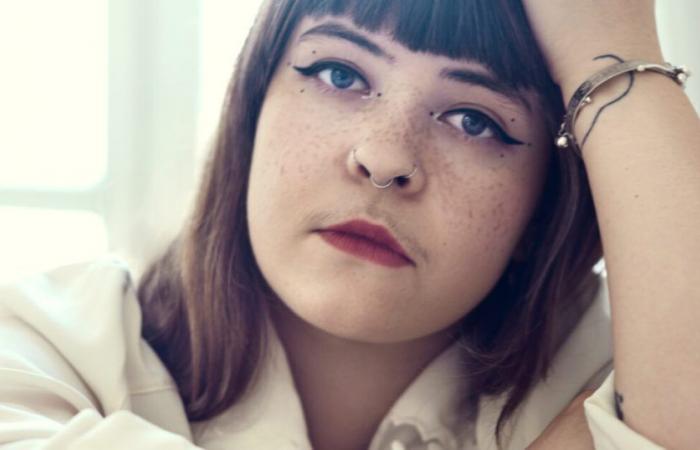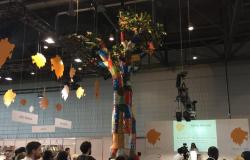“One evening, returning from the self-managed space in Lausanne, I told my father about my evening. He immediately asked me the following question: “Do you know what was there before?” I knew it had been a concert hall. That’s how I knew he had spent a lot of time at the Dolce Vita. So he turned on the light table to show me the negatives of the many photos he had taken during concerts there. It was magical! The photos are so beautiful. They reflect the atmosphere and an extraordinary energy.
What was cool was that my dad would tell me the stories and play me the music at the same time. He immersed me in the atmosphere, I was touched to see how much it affected him. This place was really important to him.
I knew that my father had taken a lot of photos, he had already exhibited some of them. But never on this subject. I didn’t understand why he never put himself forward with his photographic work, which he considers more of a hobby alongside the rest. I thought it was a shame.
I said to him, “We need to make an exhibition out of it or something.” The idea popped into my head and I always kept it in the back of my mind. I decided to make a book of it for my diploma thesis at Eracom.
I am 24 years old, I was born a year after the Dolce Vita closed, in 1999. So I did not experience the excitement of that time in Lausanne nor this legendary place.
My father spent time there to see and listen to the artists, and take photos of them. After the concert, he would leave while everyone else stayed to party. Because it was also a unique meeting place in the area.
I really would have liked to see that, it’s so difficult to project myself into the minds of the people who lived through that period. This energy and this libertarian spirit no longer exist today. Music was at the center of everything. I have the feeling that people dream of reconnecting with this type of atmosphere today. We always have great places in Switzerland, like l’Usine, in Geneva, or la Case à Chocs, in Neuchâtel. But I don’t think the state of mind is comparable to that of that time.
To begin with, the Lôzane move movement fought to obtain and create a place to go and see concerts accessible to everyone. Great artists who sometimes came from far away wanted to play at the Dolce Vita. My parents tell me about this time and place as a total explosion.
Shared passion for music
I now live in Paris, where I am a graphic designer. This city allows me to satisfy my appetite for the arts thanks to an abundant cultural offer. I go to listen to concerts, see exhibitions. I don’t know if you can call it punk, but I discovered a place with two rooms that I really like: La Gare/Le Gore. Entrance is free. From 9 p.m. to midnight, La Gare offers jazz concerts, and on the other side it’s more techno until 5 a.m.
It’s kind of an old, rundown train station with carpets everywhere, it’s very cool. There is a real social and generational mix there, young people having fun with people who are the age of their parents. This somewhat alternative place is still relatively little known.
“Music is part of my life…”
My father and mother passed on to me a passion for music. My greatest memories go back to the Paléo Festival, when my father worked at the Village du Monde. I spent all my summers on the Asse plain and I saw a multitude of concerts with him. I remember, among others, Asaf Avidan and Stromae. I’ve seen so many artists on stage that I don’t remember all their names. I have images that come back to me, notably the concert by the Jamaican reggae collective Inna de Yard, which particularly struck me.
I was immersed in the energy of live performance very early on. My mom tells me that when my father worked for the independent label Recrec, he came home with artists. There is a photo of me as a baby in the arms of the members of the metal band Apocalyptica, who play the cello, we had chanced upon them on a plane.
On the first page of the book, I write “Music is part of my life…” because I listen to it a lot and also because I love singing. I did lyrical singing at the Conservatory. And before I started my training as a graphic designer, I wrote and performed a play myself, Through the looking glass, during my last year at the Steiner School. I spoke to myself in a mirror in a search for my identity.
I am passionate, which is why I chose the profession of graphic designer, which allows me to touch on a number of different worlds.
When we varnished the work La Dolce, deux regards at l’Atelier, a café located on Avenue de France, in Lausanne, in April, I didn’t know what to expect. I was very touched to see so many people crowding into this small space, it spilled out onto the street! Blaise Duc and Mandrax gave the event a boost, I think in the end we had 300 people, it was huge!
It was a reunion of sorts, some had not seen each other since La Dolce Vita. It was really touching to see all these people together who have memories in common, as well as other generations, including many friends of mine.
During this opening, faced with the very favorable response from the public, the idea of an exhibition resurfaced. Nothing is planned at the moment, but we are thinking about it. This would allow us to show more, because there are many other photos, and not only of the Dolce Vita, there is also Fri-son, in Fribourg, and l’Usine, in Geneva. And Paleo of course.”
The newspaper La Dolce, two views of Edgar and Celeste Cabrita, on order: [email protected]






